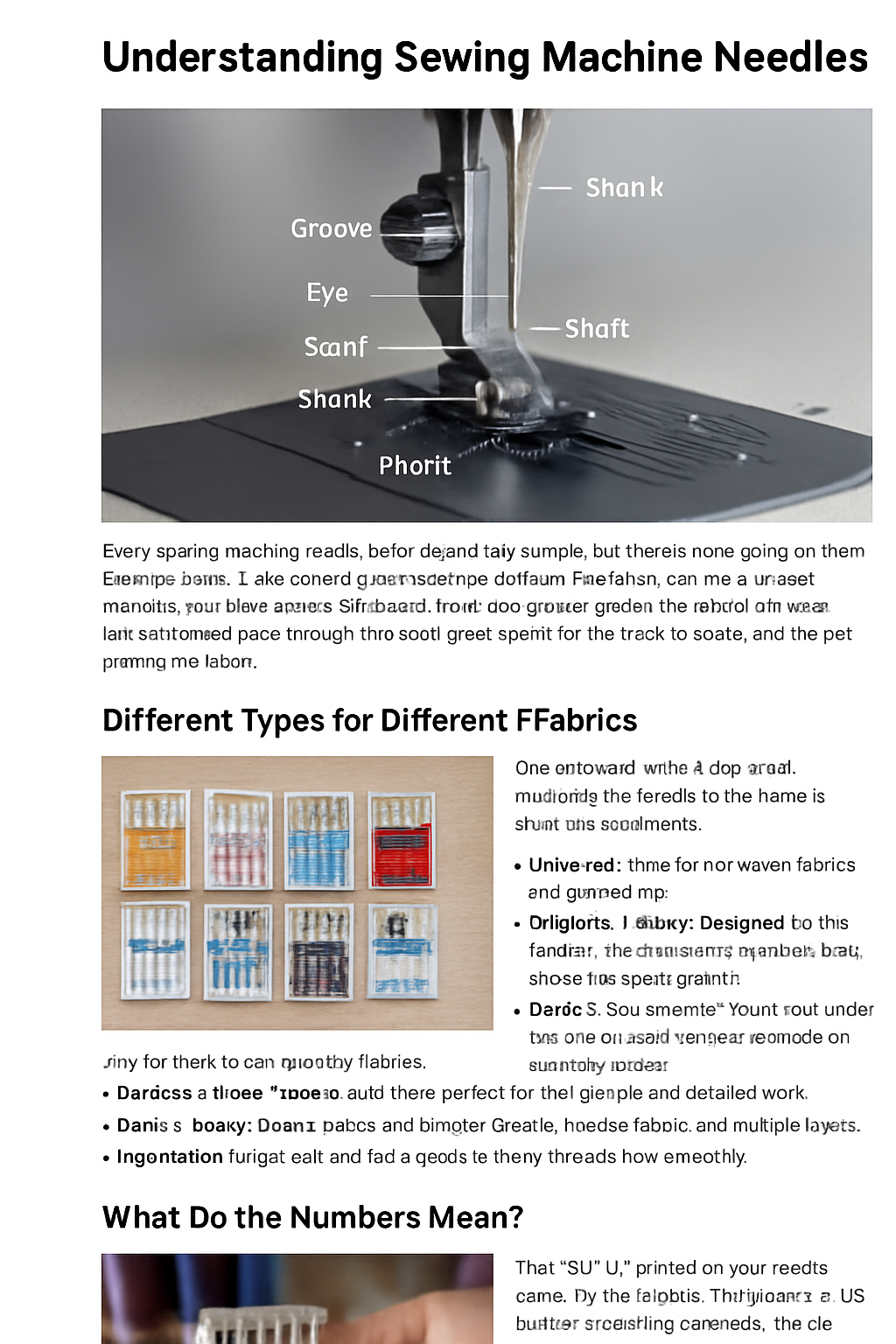Every sewing machine needle looks deceptively simple, but there’s more going on than meets the eye. It has several parts working together: the shank anchors it in your machine, the shaft carries the thread down, the groove guides the thread, the eye lets the thread pass through, the scarf gives space for the hook to catch, and the point pierces the fabric. 维基百科+1
When these parts are designed well, your stitches stay clean, tension stays balanced, and your machine runs smoothly.
Different Types for Different Fabrics
One universal needle doesn’t do it all; matching the needle to the fabric pays dividends.
- Universal: Great for many woven fabrics and general use.
- Ballpoint / Jersey: Designed for knit fabrics—its rounded tip spreads fibers rather than slicing them. sewessential.co.uk+1
- Stretch: Has a special “scarf” cut under the eye to avoid skipped stitches on stretchy fabrics. sewessential.co.uk
- Microtex / Sharp: Slender and sharp — perfect for fine wovens and detailed work. sewessential.co.uk
- Jeans / Denim: Strong shafts and sharper points for thick fabrics and multiple layers. sewessential.co.uk+2维基百科+2
- Embroidery: Larger eye and extra scarf so fancy threads flow smoothly. 维基百科
- Topstitch / Leather / Quilting: Each has tweaks—larger eyes, wedge points, strong shafts—to handle specialty tasks. 维基百科+2sewessential.co.uk+2

What Do the Numbers Mean?
That “80/12” printed on your needle pack? It’s not random. It’s a metric + US system describing thickness. For example, “80” means a .80 mm shaft diameter, and “12” is the equivalent US size. Sewjersey.com+1
As the numbers go higher, so does needle strength. Lightweight fabrics favor smaller numbers like 60/8 or 70/10, while denim or upholstery needs something like 100/16 or 110/18. Sewjersey.com+1
Signs You’re Using the Wrong Needle
Sometimes your machine tells you it’s unhappy. Here’s how to read the clues:
- Skipped stitches on knits → often a sign you need a stretch or ballpoint needle.
- Puckering or fabric distortion → likely needle too large or too sharp for delicate fabric.
- Thread shredding or breakage → needle eye might be rough, or you’re using a mismatched needle type.
- Noisy popping or bending → the needle might be dull, bent, or hitting something in the machine.
If stitches look messy or tension acts weird and nothing else fixes it, swap in a fresh correct-type needle.
How to Care for and Replace Needles
Needles aren’t forever. Most experts recommend changing after 6–8 hours of use—or at the start of a new project. sewessential.co.uk+1
Store needle packs by type and size, so you don’t grab the wrong one in a rush. Always insert the needle fully and snug the screw to avoid wobble. And if your machine jams, inspect for bent needles before sewing further.
Real-World Tips (From Makers)
- Many sewists begin with a universal 80/12 as a safe all-purpose needle. If problems start, consider swapping to a more specialized one.
- Thread size matters too—if the thread is too thick for the needle eye, it’ll fight you on tension.
- Test your chosen needle + fabric + thread combo on a scrap: see if stitches are smooth before tackling the real project.
“The sizes tell you how thick the needles are … choose a size that matches your thread and fabric.” reddit.com

Leave a Reply